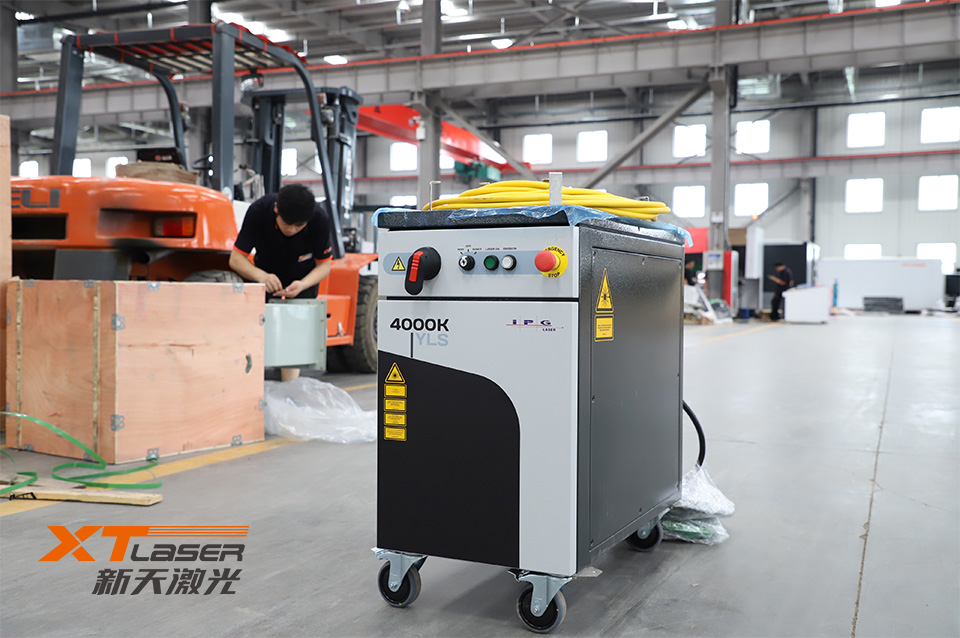Correct alignment method for flat laser cutting machines
XT Laser Flat Plate Laser Cutting Machine
The advantage of laser cutting machines is that they replace traditional mechanical knives with invisible laser beams. It has the characteristics of high precision, fast cutting speed, not limited by cutting patterns, automatic typesetting, material saving, flat cuts, and low processing costs. How to correctly align the flat laser cutting machine will gradually improve or replace traditional metal cutting process equipment. How to adjust the output position of a laser cutting machine.

The mechanical part of the laser blade has no contact with the workpiece, and it will not scratch the surface of the workpiece during operation. Laser cutting speed is fast, the incision is flat and smooth, and generally does not require subsequent processing. The cutting Heat-affected zone is small, the plate deformation is small, and the incision is narrow (0.1mm~0.3mm). The incision is free of mechanical stress and shear burrs. High machining accuracy, good repeatability, and no damage to the material surface. CNC programming, capable of processing any scheme, capable of cutting entire sheets in large format without the need for mold opening, economical and time-saving.
The correct alignment method for flat laser cutting machines is as follows:
The laser guide system is composed of A, B, and C three-level mirrors and adjustable focusing mirrors;
The laser generation system consists of a CO2 laser and a laser power supply.
The optical path is the light guide system, and the Armada laser machine uses the flight optical path. The complete optical routing consists of a laser tube, a reflector frame (A, B, C), a focusing mirror, and corresponding adjustment devices, which are the core parts of the laser cutting machine.
The quality of light path adjustment is directly related to the cutting effect, so it is necessary to patiently and meticulously make adjustments.
a. Reflector frame A
1. Light target placement bracket 2. Reflector 3. Spring locking screw 4. Adjusting screw 5. Adjusting nut 6. Locking screw a
7. Locking screw b 8. Adjusting screw M1 9. Reflective mirror locking plate 10. Adjusting screw M 11. Adjusting screw M2
12. Tension spring 13. Reflector mounting plate 14. Support plate 15. Base
b. Reflector frame B (its installation base plate is different from that of frame A, except for the rest being the same)
1. Install the base plate (movable left and right)
2. Locking screws
Reflector frame C
1. Reflector adjustment plate 2. Reflector 3. Locking screw 4. Adjusting screw M1 5 Reflector adjustment plate
6. Reflector clamping plate 7. Adjusting screw M 8. Locking screw 9. Adjusting screw M2
d. Focusing mirror
1. Focusing mirror inner cylinder 2. Inlet pipe 3. Limit screw ring 4. Air nozzle transition sleeve
5. Air nozzle 6. Mirror tube 7. Limit screw 8. Adjusting sleeve
3. Adjustment of optical path
(1)
(1) Adjustment of the first light
Apply transparent adhesive tape to the dimming target hole of reflector A, manually tap the light output, fine tune the base of reflector A and the laser tube bracket, so that the light hits the center of the target hole, and be careful not to block the light;
(2) Adjustment of the second light
Move the reflector B to the remote position, use a piece of cardboard to emit light from near to far, and guide the light into the cross beam target. If the remote light is inside the target, the near end must be inside the target. Then adjust the near end and remote light spots to be consistent, that is, how the near end deviates, and how the far end also deviates, so that the cross is in the same position in both the near end and remote light spots. This indicates that the light path is parallel to the Y-axis guide rail.
(3) Adjustment of the third light (note: the cross divides the light spot left and right)
Move the reflector C to the remote position, guide the light into the light target, and hit the target once at the incoming end and at the remote end respectively. Adjust the position of the cross to be the same as that of the cross in the near end spot, indicating that the beam is parallel to the X-axis. At this point, if the optical path leans inward or outward, it is necessary to loosen or tighten M1, M2, and M3 on the mirror frame B until they are evenly divided.
(4) Adjustment of the Fourth Light
Stick a piece of transparent adhesive tape onto the light outlet, leaving a circular mark on the light outlet hole. Click on the light outlet and remove the adhesive tape to observe the position of the small hole. Adjust M1, M2, and M3 on the mirror frame C as necessary until the light spot is round and straight.
(2) Measurement method for focal length: Place a piece of iron under the nozzle, jog until the light comes out, and lift the mirror tube. When the light hits the brightest iron plate, tighten the screw. At this time, the distance from the surface of the iron plate to the nozzle measured is the focal length (about 4-6 mm)



